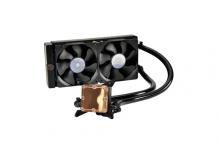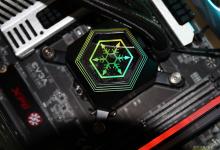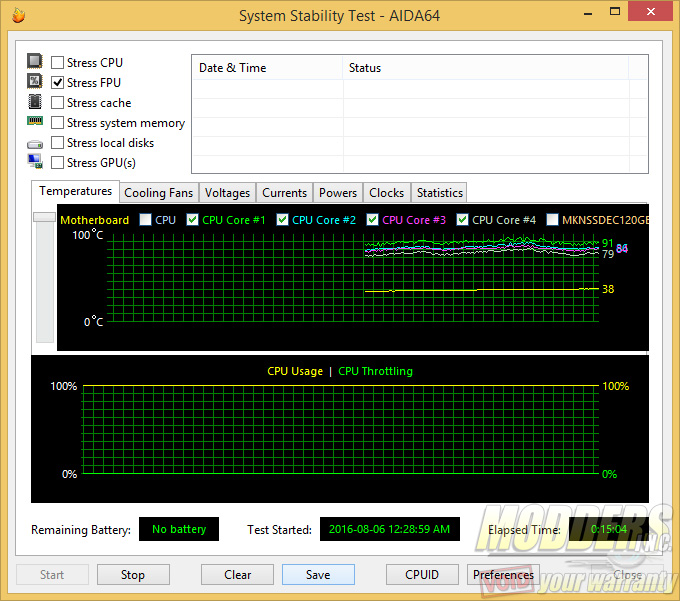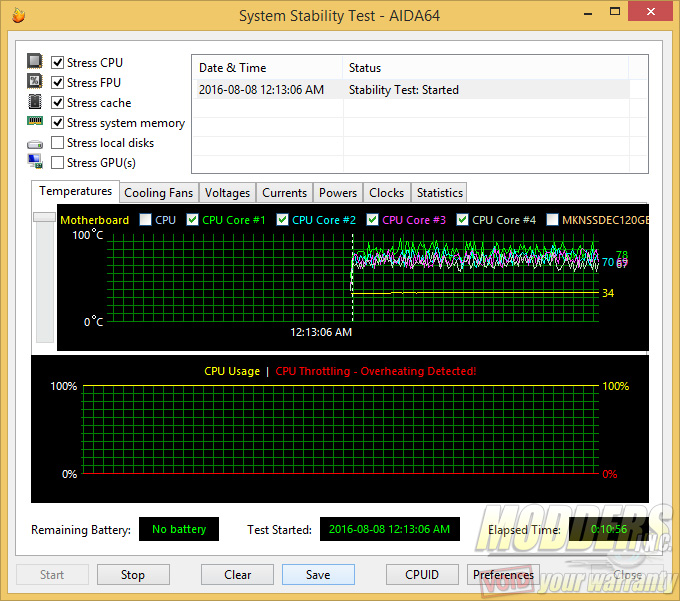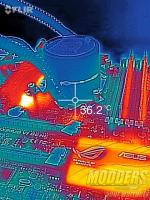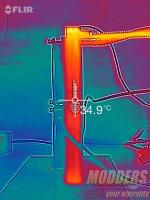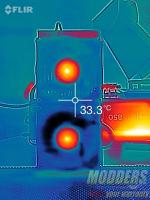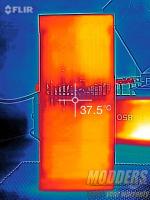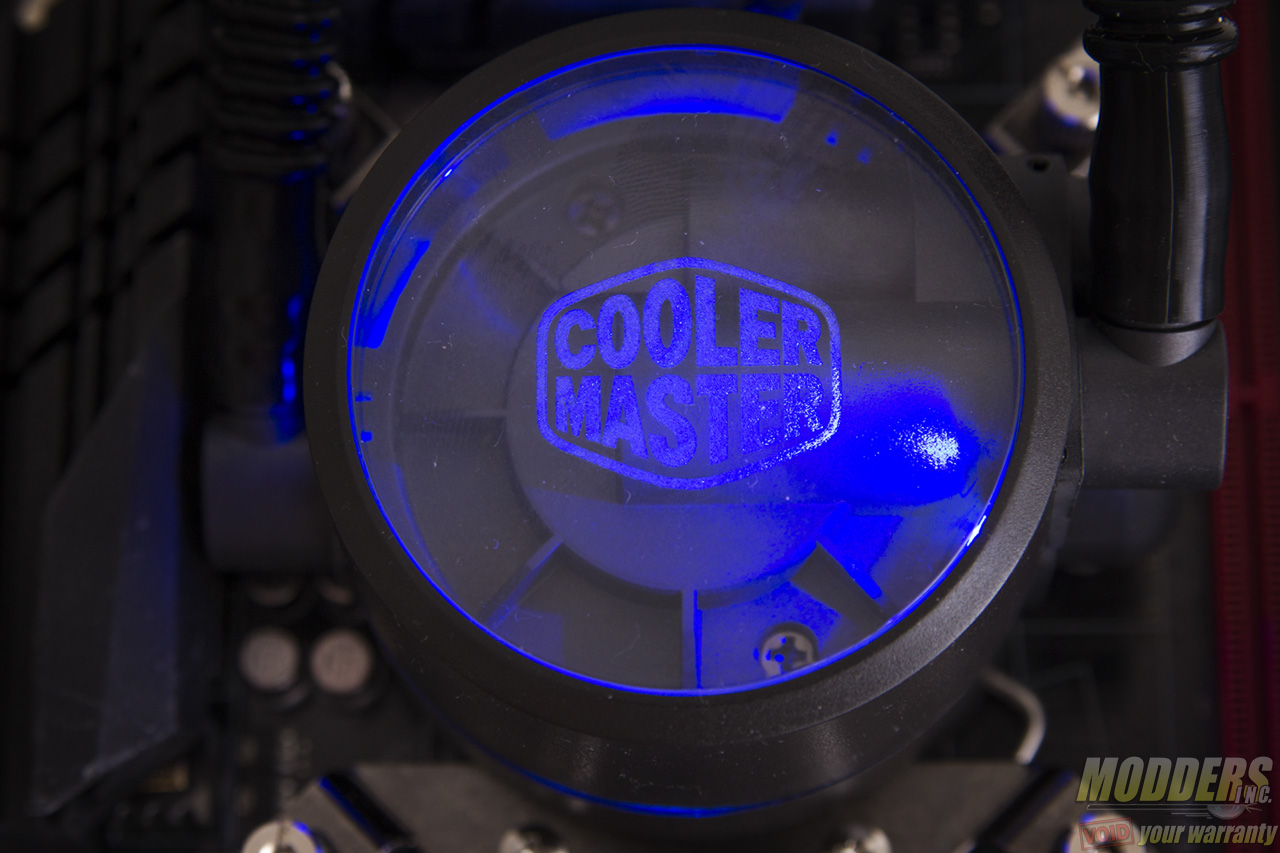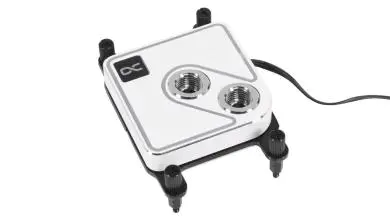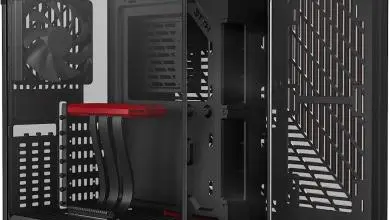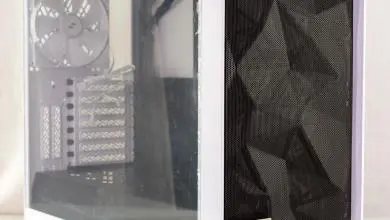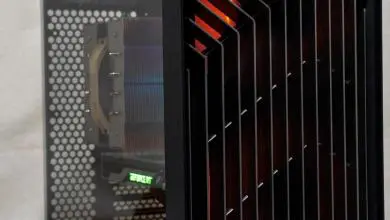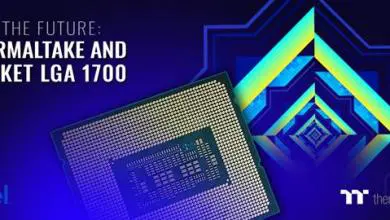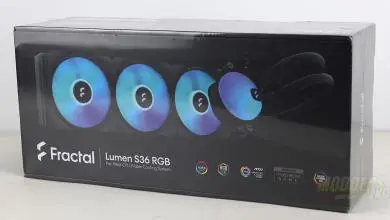Cooler Master MasterLiquid Pro 240 Review: A Gestalt Approach to Cooling
Test System and Benchmark Results
Test System:
| Processor | Intel Core i7-4770K (Retail) |
| Motherboard | ASUS Maximus VI Gene Z87 Motherboard (1603 BIOS) |
| Memory | Mushkin Stealth 1600MHz DDR3 |
| Drive | OCZ Agility 4 256GB SSD |
| Video Card | Intel Integrated Graphics |
| Thermal Compound | Noctua NT-H1 |
| Case | DimasTech Mini v1 |
| Power Supply | Corsair HX850W |
| Operating System | Windows 7 x64 Pro |
Test was conducted on a DimasTech MiniV1 open-air test-bench for parity performance between tower-style coolers and C-type downward or upward blowing coolers. Ambient temperature is measured at the fan intake and kept as constant as possible (room controlled temperature). All case and heat sink fans were benchmarked with fan control settings disabled and running at 100% unless otherwise specified.
To get closer to real world performance, a retail Intel i7-4770K CPU was used (non-delidded). Stock settings use a constant 1.1Vcore voltage while overclock settings use a constant 1.2Vcore voltage with EIST disabled (1.28Vcore OC test added for high-end air coolers). The Intel core i7-4770K integrated graphics was used for display output and no discrete graphics card was installed to prevent additional heat sources from contributing inside and outside the case. Multi-core enhancement is enabled in the BIOS by default and left on (ASUS Turbo Core policy used instead of Intel standard). Note that performance results on this setup are not directly comparable with any benchmarks from some of the previous reviews as the UEFI BIOS on the motherboard has been updated and now has a much tighter control on the Vcore voltage.
Mushkin Stealth DDR3 modules ensure full compatibility with any CPU cooler tested as its heatspreaders only add ~1.5mm to the standard JEDEC module height of 30mm compared to other modules which limit cooler compatibility.
Temperatures are averaged (last minute) from individual core temperature results monitored by AIDA64 after 15 minutes using the default CPU, FPU, Memory and Cache simultaneous load. AIDA64 is able to use the latest instructions including AVX and AVX2, etc unlike other older CPU load tests so it is also a lot more “future proof” as more software start to utilize it.
FPU-only load average is used to simulate worst case scenario load levels similar to Intel Burn Test or OCCT. Please keep in mind that this test is brutal and not even close to real-world load (especially not that constant for that amount of time), so not many CPU coolers are expected to pass this test but the ones that do are exceptional. Results marked “100″ and in red means thermal limit was reached and the CPU was throttled, even for just but a second. This includes results where even just the first core reached the limit and even if it briefly happened.
It is marked as 100 in red in the review if it happens three times. Three runs are conducted per cooler and a fourth run is done after a remounting to verify. Last minute average is taken instead of peak because it represents the averaged behaviour of the thermal performance instead of worst-case scenario or a snapshot. Temperature delta results are used to account for variance since not all heatsinks can be conducted on the same day.

The Corsair HX850W power supply’s fans only ramp up when system load is past 20% making it an excellent power supply to use for when testing the CPU cooler’s noise levels. Any load under that and the fan does not spin at all, effectively acting in passive mode.
The American Recording Technologies SPL-8810 meter is placed 20-inches/50cm from the source fan to measure sound level. The entire test unit is moved to an acoustically treated room to get the ambient noise as low as controllably possible for real-world results. All other fans are disabled to eliminate sound sources that are not from the cooling unit itself that is being tested. This includes all case fans and all other component fan is shut off. The boiler during winter or the air conditioner during summer is also shut off to eliminate ambient noise further and sound testing is conducted from 2AM to 5AM so sound traffic from the outside is minimized as much as possible. Fan levels are controlled manually via software and at a separate time from the temperature testing.
Sound level measurement is logarithmic so it is on a separate graph than temperatures because it is on a completely different scale.
A FlirONE Thermal Imaging Camera was used to observe thermal behaviour under load. This is a lower-cost thermal imaging unit equipped with a low resolution thermal lens working in conjunction with a regular resolution camera lens to produces a composite image. Because of the FlirONE’s low resolution performance, it is not used as a benchmarking tool to measure temperature but rather a tool for observing thermal behaviour under load.
Benchmarks:
It passes the 4.2GHz FPU-only survival test, knocking at the door of the thermal throttling point with the fans set to Performance mode. The Silent mode setting of the fans is not enough to keep the CM MasterLiquid Pro 240 from throttling under this load however.
Pushing the overclock to 4.4GHz 1.28Vcore under standard load, it makes it past the 10 minute mark but the first core spikes past the threshold. FPU-only load with this overclock will throttle immediately. FPU-only loads tend to be harsher to liquid AIO coolers than CPU air coolers.
Thermal behaviour (white with red bias are the hot parts, black with blue bias are the colder parts):
Sound Profile (Fan RPM vs Noise Level) – Room ambient noise is 34.8dBA:
| Fan Speed | 2x CM MasterFan Pro Air 120 Balance |
| RPM | dBA |
| 2500 | 49.8 |
| 2400 | 48.3 |
| 2300 | 48.1 |
| 2200 | 46.6 |
| 2100 | 45.9 |
| 2000 | 45 |
| 1900 | 43.6 |
| 1800 | 42.4 |
| 1700 | 41.4 |
| 1600 | 41.1 |
| 1500 | 39.5 |
| 1400 | 39 |
| 1300 | 38.6 |
| 1200 | 37.9 |
| 1100 | 37.3 |
| 1000 | 37 |
| pump-only | 36.5 |
As with the previous Nepton series, the new MasterFan Air bundled is quite impressive, showing a great and flexible range in PWM mode with switch limiter options for those without a PWM header. These fans also exhibit smooth acoustic performance as it transitions from each step without any pitch irregularities or rattling hum. It performs decently in PWM or in Silent/Quiet preset modes
With the larger pump, better performance is expected and it definitely shows in the benchmarks. It wasn’t simply the pump doing the work of course, the denser radiator paired with the appropriate fan deserves its fair share of compliment and Cooler Master credits the entire set of improvements as part of its “FlowOp technology”. The copper contact surface was also a welcome change, having an elevated and thicker plate than the Nepton series. The surface texture is also a lot more uniform rather than having a brushed look. The FEP tubing is the only other feature inherited from the previous series so those who are not fond of its less flexible and accomodating nature would be disappointed in that front. On the upside, it feels quite durable however and very resistant to bending. Perhaps too much resistance.
Surprisingly, Cooler Master was honest about the load capability of the MasterLiquid 240 Pro, citing portfolio positioning for 150W CPUs and aimed more towards audio engineers and some gaming users. CPU cooling manufacturers usually like to overstate their cooler’s capability, citing 250W+ capacity designed for overclocking but testing shows otherwise as I have seen time and time again. Although not a top-of-the-class, record-setting performer, the MasterLiquid 240 Pro’s penchant toward silent performance certainly makes ideal as an AIO for those who are particular about acoustics, something which AIOs are not usually known for as they tend to be bundled with high-RPM monsters designed only so that reviewers who only test temperatures would heap praise. For those looking at an overall, holistic approach however, the MasterLiquid 240 Pro looks and sounds like a sensible choice.
